Discover 7 hidden attractions, cool sights, and unusual things to do in Harrodsburg (United States). Don't miss out on these must-see attractions: Pleasant Hill, Old Fort Harrod State Park, and Confederate Monument in Harrodsburg. Also, be sure to include Beriah Magoffin Monument in your itinerary.
Below, you can find the list of the most amazing places you should visit in Harrodsburg (Kentucky).
Table of Contents
Pleasant Hill

Church in Mercer County, Kentucky. Pleasant Hill, Kentucky, USA, is the site of a Shaker religious community that was active from 1805 to 1910. Following a preservationist effort that began in 1961, the site, now a National Historic Landmark, has become a popular tourist destination. Shaker Village of Pleasant Hill, or Shakertown, as it is known by residents of the area, is located 25 miles southwest of Lexington, in Kentucky's Bluegrass region. It is a National Historic Landmark District.[1]
Address: 3501 Lexington Rd, 40330-9218 Harrodsburg
Old Fort Harrod State Park
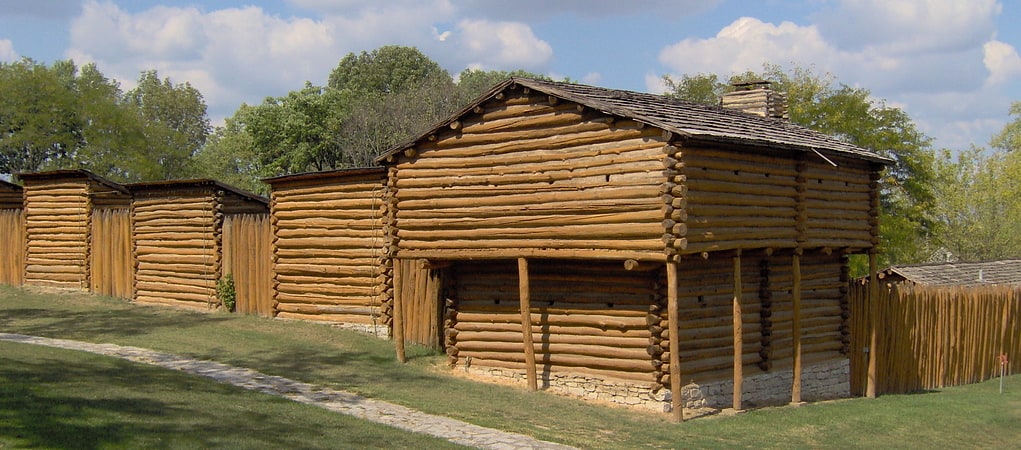
Park in Harrodsburg, Kentucky. Old Fort Harrod State Park is a park located in Harrodsburg, Kentucky in the United States. The park encompasses 15 acres and features a reconstruction of Fort Harrod, the first permanent American settlement in the state of Kentucky. The park was founded in November 1934 as Pioneer Memorial State Park, and dedicated by President Franklin D. Roosevelt and Governor Ruby Laffoon.
The fort was named after James Harrod, who led an early party of settlers into Kentucky.[2]
Address: 100 S College St, 40330-1645 Harrodsburg
Confederate Monument in Harrodsburg
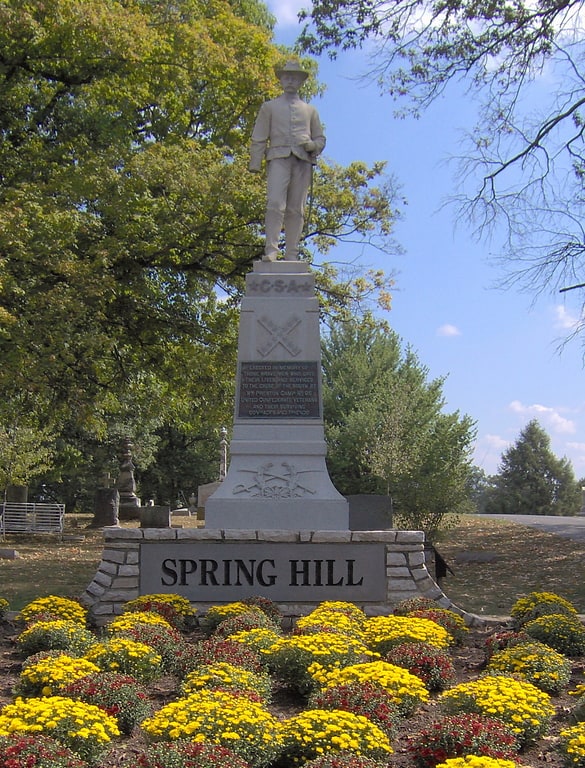
The Confederate Monument in Harrodsburg, located at the entrance to Spring Hill Cemetery in Harrodsburg, Kentucky, is a statue listed on the National Register of Historic Places. It depicts a life-sized older Confederate cavalryman standing ready.
The monument depicts Captain Gabe S. Alexander, who served in John Hunt Morgan's 2nd Kentucky Cavalry. The pedestal has an engraved Southern Cross of Saint Andrew, commonly called the Confederate battle flag, on its front. Below the cross lies the dedication plaque, and below that an engraved wreath encircling a sword and scabbard. On the rear is an engrave Third Confederate Flag in the midst of cannonballs and battle smoke. Also on the rear is a verse from the Bivouac of the Dead, written by Kentuckian Theodore O'Hara, which six other monuments in Kentucky also have a verse from. When dedicated in 1902 by the United Confederate Veterans, speeches were made in favor of the Confederate cause and condemning revisionist history that defamed the Southern experience in the Civil War.
The verse from The Bivouac of the Dead is:
To fight in a just cause and for our country's glory is the best office of the best men.Harrodsburg once saw Morgan's forces enter the town during the war. Instead of conflict, the town's ladies laid out a gigantic picnic on their lawns for the men, who had just raided through Glasgow, Lebanon, and Springfield. The only other action Harrodsburg saw during the War was when Braxton Bragg had his men withdraw from the Battle of Perryville through the town.
Harrodsburg was also home of the 19th Regiment Kentucky Volunteer Infantry. An infantry regiment that served in the Union Army during the American Civil War.
On July 17, 1997, the Confederate Monument in Harrodsburg was one of sixty different monuments related to the Civil War in Kentucky placed on the National Register of Historic Places, as part of the Civil War Monuments of Kentucky Multiple Property Submission. Harrodsburg's is one of 23 that were statues, of which eight were erected in cemeteries. The Beriah Magoffin Monument, within Spring Hill Cemetery as well, is also part of the Civil War Monuments of Kentucky MPS.[3]
Beriah Magoffin Monument
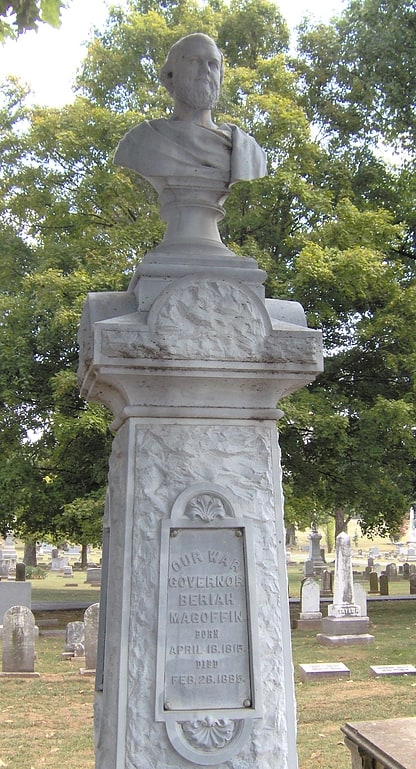
The Beriah Magoffin Monument, in Spring Hill Cemetery of Harrodsburg, Kentucky, commemorates Beriah Magoffin, who was governor of Kentucky when the Civil War started. Although sympathetic to secession, he sought to retain neutrality for Kentucky for the conflict, until pro-Union forces compelled him to resign from the governorship.[4]
St. Peter's AME Church
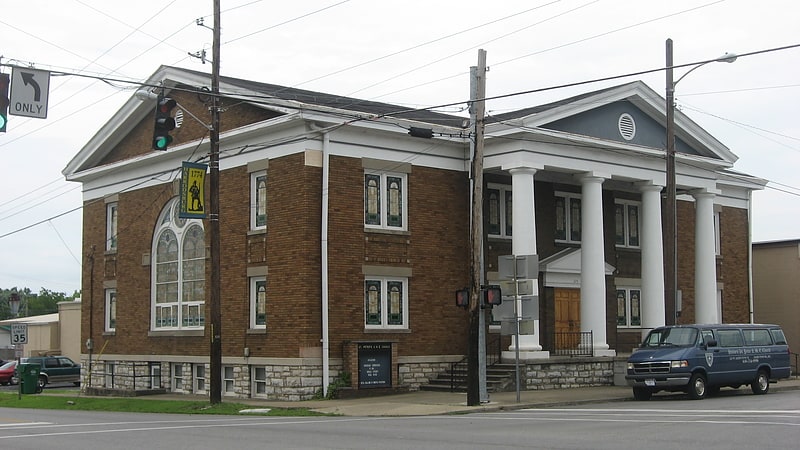
Methodist church in Harrodsburg, Kentucky. The St. Peters AME Church in Harrodsburg, Kentucky, is a historic church at Lexington Street and US 127. It was added to the National Register of Historic Places in 1989.
It is an African Methodist Episcopal church. The congregation was founded in 1839. The present church was built by contractor George Sallee Jr. with work contributed by members of the congregation during 1917 to 1918.[5]
St. Philip's Episcopal Church
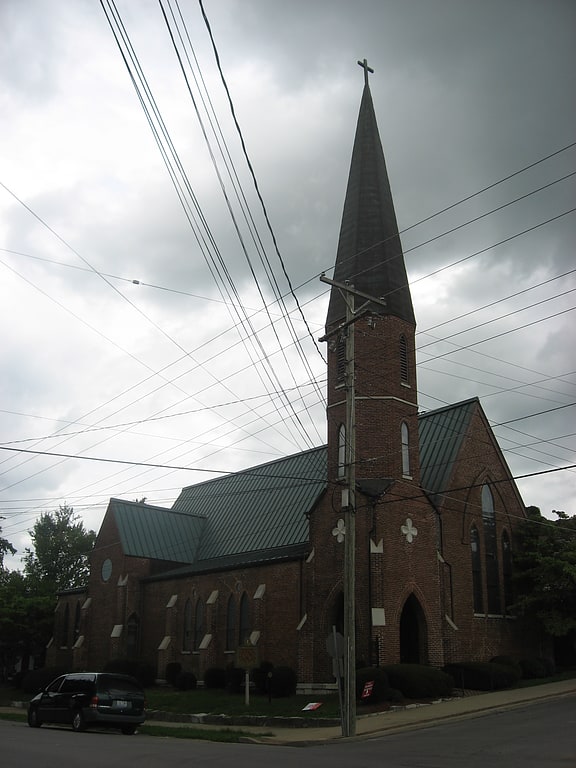
Episcopal church in Harrodsburg, Kentucky. The St. Philips Episcopal Church in Harrodsburg, Kentucky is a historic church at Short and Chiles Streets. It was built during 1860-1861 and was added to the National Register in 1978.
It is a brick church with granite trim. It is approximately 90 by 30 feet (27.4 m × 9.1 m) or 90 by 35 feet (27 m × 11 m) in plan.[6]
Rocky Point Manor

Mansion in Harrodsburg, Kentucky. Rocky Point Manor is a Two Story mansion in Harrodsburg, Kentucky. It was built in 1810 for attorney and judge James Haggin. It was considered a grand home for Kentucky during the settlement period, its grounds spanning about 400 acres at the time, and stood next to the historic Fort Harrod.
Following the bloody Battle of Perryville, on October 8, 1862, Rocky Point served as an impromptu field hospital for the wounded, both Union and Confederate soldiers having been treated in its basement, and a crawlspace on the wall having been used as a temporary morgue.[7]